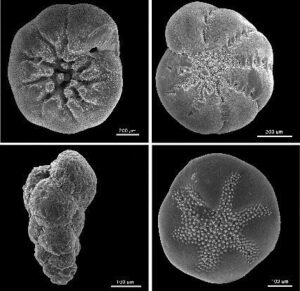
Figure 1: A Japanese maple in autumn
Source: Pixabay
Autumn is the season when life goes to rest. Nights lengthen and days grow cold. Vegetables bolt, dispersing seeds by wind and fruit. Leaves blush red, orange, and pink before piling in a brown heap. As climate change leads to increased global temperatures, and elevated CO2 levels, many plants have adjusted the timing of their life cycles (i.e., their phenology) to adapt to these changes (Menzel, 2003). Across the world (and especially in the Arctic), vegetation is beginning to grow much earlier in the spring, causing the growing season of many plants to advance earlier in the year by days, and sometimes even by weeks (Kerby & Post, 2013). In fact, European trees send out their spring leaves a whole 2 weeks earlier than they did one century ago (Keller, 2020).
As temperatures stay summer-like into the early fall, many scientists have predicted that the same trend happening in spring will continue to occur in autumn — the leaves will turn later in the year, just as they emerge earlier (Keller, 2020). There is evidence to this effect. So far, global warming has indeed led to an extended growing season in the fall. Records suggest that trees senesce (lose their leaves) six days later than they did one century ago (Crowther et al., 2020).
However, a recent study conducted by scientists at the University of Zurich and published in the journal Science suggests that this trend of later leaf-fall may not continue. In fact, it may reverse. As climate change shifts the date of leaf emergence earlier and earlier in the year, the date of leaf-fall may shift earlier, as well. This theory, called the “carbon sink limitation hypothesis,” states that a plant can only absorb so much CO2 during spring and summer until its growing season must end. This limitation on plants’ carbon sinks may be caused by developmental constraints and the scarce soil nutrients, such as nitrogen and phosphorus (Morgan & Connolly, 2013).
The researchers used a vast database of observations from the Pan European Phenology Project to inform their study. Researchers extracted data between 1948-2015 and from 3,800 locations across central Europe — a total of 434,000 observations. Six deciduous trees were studied: English Oak, Silver Birch, European Beech, European Horse Chestnut, European Larch, and Rowan. In addition to their database extractions, the researchers performed a set of experiments on tree saplings and further tested the effect of temperature, daylight, and CO2 on leaf senescence (Crowther et al., 2020).
Both the new experiments and the observations from the existing database strongly supported their hypothesis — in fact, each ten percent increase in photosynthetic activity from the database advanced leaf senescence by eight days.
With this new information, researchers created a novel model for the timing of leaf senescence. Previous models (which were 27-42 percent less accurate) predicted that the growing season would extend by two or three weeks by the end of the century. Autumn leaf senescence, specifically, was predicted to delay by 7-19 days. However, their new model suggests that leaf senescence will actually advance 3-6 days by the end of the century (Crowther Lab, 2020).
These results have serious consequences for climate change predictions. The extended length of growing seasons has long been considered a silver lining in the climate crisis. As wildfires torch forests, hurricanes destroy cities, and droughts eviscerate crops due to global warming, at least trees would have a longer growing season. With a longer growing season, forests across the globe would continue to consume more CO2 each year, counteracting the effects of global warming (Drake et al., 1994). However, if trees are indeed bound by carbon sink limitations, they may have a much more limited capacity to draw down CO2 than experts previously thought.
These findings should not be read as a doomsday prophecy, but as a call to action. It is one more reason why the reversal of climate change is in our hands. It’s up to us to create climate policy and technology that will reduce emissions and draw down atmospheric CO2. Trees are vital to our atmosphere, but they are not enough. If we want to steward a livable planet for generations to come, we must shoulder the responsibility and bring about the solutions.
References
Crowther Lab. (2020, November 26). How Climate Change Affects Autumn. Retrieved from https://www.youtube.com/watch?fbclid=IwAR1lJBy_uy93RWteU0bXTJsQGUDmQDpsh4uvJCVn-ZhhPpIfjIky1LzSyEg&v=IoZlgSJbCOc&feature=youtu.be
Drake, B. G., Gonzàlez-Meler, M. A., & Long, S. P. (1997). MORE EFFICIENT PLANTS: A Consequence of Rising Atmospheric CO2? Annual Review of Plant Physiology and Plant Molecular Biology, 48(1), 609-639. doi:10.1146/annurev.arplant.48.1.609
Keller, M. (2020, November 30). Which factors trigger leaf die-off in autumn? Retrieved from https://www.sciencedaily.com/releases/2020/11/201130101309.htm
Kerby, J. T., & Post, E. (2013). Advancing plant phenology and reduced herbivore production in a terrestrial system associated with sea ice decline. Nature Communications, 4(1). doi:10.1038/ncomms3514
Morgan, J., & Connoly, E. (2013). Plant-Soil Interactions: Nutrient Uptake. Retrieved December 22, 2020, from https://www.nature.com/scitable/knowledge/library/plant-soil-interactions-nutrient-uptake-105289112/
Menzel, A. (2003). Plant Phenological Anomalies in Germany and their Relation to Air Temperature and NAO. Climatic Change, 57(3), 243-263. doi:10.1023/a:1022880418362
Zani D, Crowther TW, Mo L, Renner S, Zohner CM. Increased growing-season productivity drives earlier autumn leaf senescence in temperate trees. Science, 2020 DOI: 10.1116/science.abd8911.
Related Posts
Twin Impacts of the Chernobyl Disaster: Birth Defects and Mental Health
Figure 1: Damage caused to reactor 4 of the Chernobyl...
Read MoreBeyond the White Coat Worker: An Overview of Citizen Science
By: Olivia Brado1, Luz Mariana Cumpa Gomez1, Shirin Dadina1, Katrina...
Read MoreStandardizing Water Quality Through Foraminiferal Proxies
Figure 1: Four benthic foraminifera photographed by a Scanning Electron...
Read MoreEva Legge



